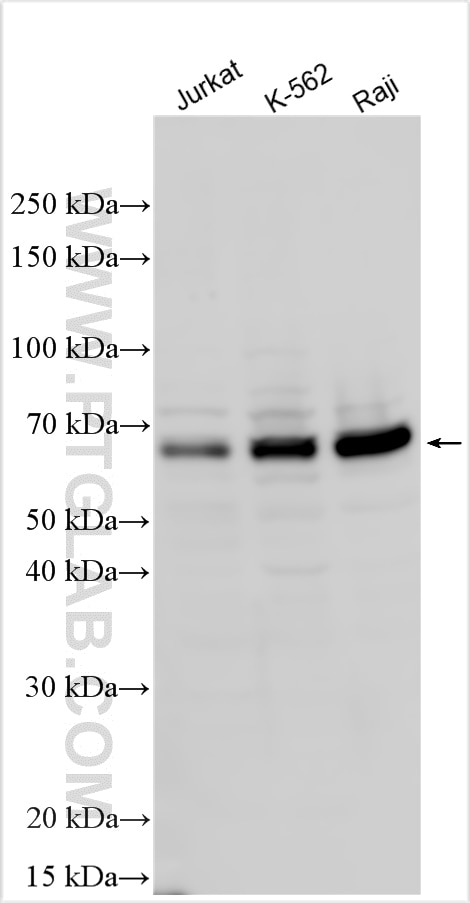NFATC2IP Polyklonaler Antikörper
NFATC2IP Polyklonal Antikörper für WB, ELISA
Wirt / Isotyp
Kaninchen / IgG
Getestete Reaktivität
human
Anwendung
WB, ELISA
Konjugation
Unkonjugiert
Kat-Nr. : 11667-1-AP
Synonyme
Galerie der Validierungsdaten
Geprüfte Anwendungen
| Erfolgreiche Detektion in WB | Jurkat-Zellen, K-562-Zellen, Raji-Zellen |
Empfohlene Verdünnung
| Anwendung | Verdünnung |
|---|---|
| Western Blot (WB) | WB : 1:500-1:3000 |
| It is recommended that this reagent should be titrated in each testing system to obtain optimal results. | |
| Sample-dependent, check data in validation data gallery | |
Produktinformation
11667-1-AP bindet in WB, ELISA NFATC2IP und zeigt Reaktivität mit human
| Getestete Reaktivität | human |
| Wirt / Isotyp | Kaninchen / IgG |
| Klonalität | Polyklonal |
| Typ | Antikörper |
| Immunogen | NFATC2IP fusion protein Ag2217 |
| Vollständiger Name | nuclear factor of activated T-cells, cytoplasmic, calcineurin-dependent 2 interacting protein |
| Berechnetes Molekulargewicht | 138 aa, 15 kDa |
| Beobachtetes Molekulargewicht | 50-65 kDa |
| GenBank-Zugangsnummer | BC021551 |
| Gene symbol | NFATC2IP |
| Gene ID (NCBI) | 84901 |
| Konjugation | Unkonjugiert |
| Form | Liquid |
| Reinigungsmethode | Antigen-Affinitätsreinigung |
| Lagerungspuffer | PBS mit 0.02% Natriumazid und 50% Glycerin pH 7.3. |
| Lagerungsbedingungen | Bei -20°C lagern. Nach dem Versand ein Jahr lang stabil Aliquotieren ist bei -20oC Lagerung nicht notwendig. 20ul Größen enthalten 0,1% BSA. |
Hintergrundinformationen
NFATC2IP, also named as NIP45, is a 419 amino acid protein, which contains one ubiquitin-like domain. TRAF1 is associated with a fraction of NFATC2IP in the cytoplasm and prevents its translocation to the nucleus. NFATC2IP In T-helper 2 (Th2) cells, regulates the magnitude of NFAT-driven transcription of a specific subset of cytokine genes, including IL3, IL4, IL5 and IL13, but not IL2.
Protokolle
| Produktspezifische Protokolle | |
|---|---|
| WB protocol for NFATC2IP antibody 11667-1-AP | Protokoll herunterladen |
| Standard-Protokolle | |
|---|---|
| Klicken Sie hier, um unsere Standardprotokolle anzuzeigen |


